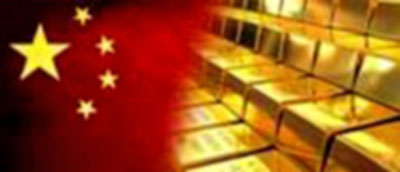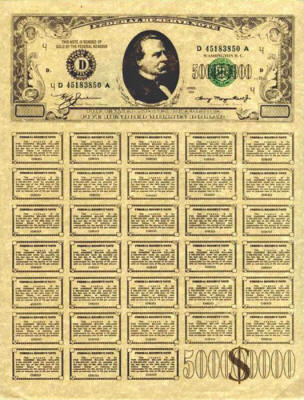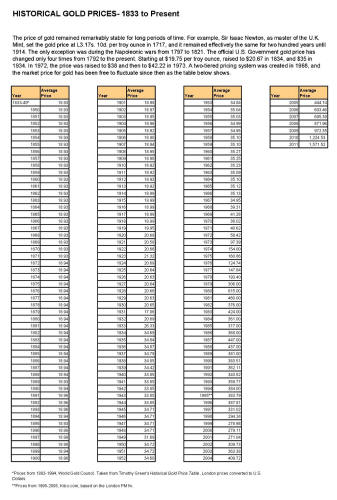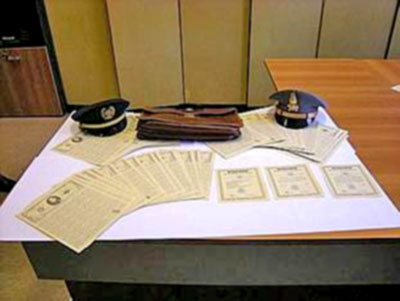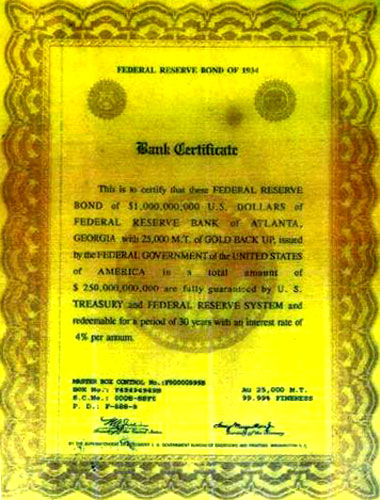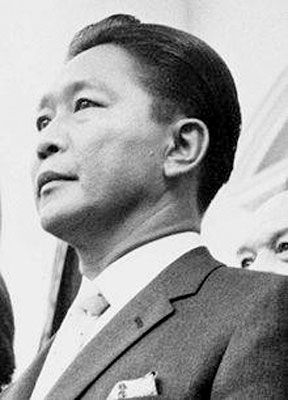|
from Exopolitics Website
This has predictably led to the US China trade imbalance becoming an issue in the U.S. Presidential Republican campaign.
In an interview on Fox News on February 2, 2012, Republican Presidential front runner, Mitt Romney, declared:
Romney’s get tough on China rhetoric impressed Donald Trump who promptly endorsed Romney for the Republican Presidential Primary.
According to Trump:
It is a fact that China maintains a huge trade deficit with the U.S.
The exchange rate of China’s currency, the Renminbi, is kept artificially low making it very difficult for U.S. products to compete with cheap Chinese imports. Imports of Chinese products have devastated the U.S. manufacturing industry. To make matters worse, China establishes tariffs on a range of key U.S. export products, such as automobiles, making it even more difficult for the U.S. to reverse the trade deficit which continues to grow.
Compounding the issue is China’s flagrant
violation of intellectual property laws where Chinese firms pirate many U.S.
products with almost total impunity thereby removing another means of
balancing the trade deficit.
According to the U.S. Treasury, as of November 2011, China held 1.1 trillion dollars in U.S. treasury securities.
All this has U.S. Republican presidential candidates and many economists speaking out loudly against China and calling for retaliatory measures such as tariffs, getting tough on Chinese violation of intellectual property laws, and pressuring China to revalue its currency.
So,
The problem is that what Romney, Trump and other China trade policy critics miss is that the trade deficit is not a result of a poorly thought out U.S. trade policy.
In fact the U.S. trade policy with China has been meticulously thought out. There is growing evidence that it is payback for the CIA’s decades long covert use of China’s “black gold” - gold that does not appear on any international gold registry.
China’s “black gold” has been hidden for over
six decades in order to fund a globally coordinated set of covert projects
hidden from public view by the CIA and a consortium of national intelligence
organizations and transnational corporations - a
Global Manhattan Project.
The biggest beneficiary of this vast historical
movement of “black” gold was the U.S. government which arranged for a
significant portion of China’s “black” gold to be transferred into the US.
Federal Reserve system, and Federal Reserve bonds and/or notes issued in
return.
As a safeguard to ensure the “black gold” would not become publicly tradable, the Federal notes/bonds were printed with spelling errors and other abnormalities that would make them appear fraudulent. Attempts to redeem these bearer bonds have been unsuccessful.
This has led to court cases and financial incidents that have drawn media attention over the high denomination bonds in dispute and their validity. Most public media attention wrongly concludes that these bonds are fraudulent as outlined in a recent Bloomberg article focusing on bonds found in the Philippines.
Two recent court cases citing meticulous fact
checking and documentation of these high denomination 1934 bonds, suggest
otherwise.
Specimen of a 500 million
1934 Federal Reserve Note A mysterious trillion dollar lawsuit filed on November 23, 2011 in the U.S. District Court for the Southern District of New York, claims that 145.5 billion dollars worth of gold was secretly given to the U.S. government in the mid-1930s by the then Nationalist government of China for safekeeping.
The lawsuit claims that 1934 U.S. Federal Reserve notes were issued to the Chinese government, and the gold transferred to the Federal Reserve Bank:
It is claimed that a total sum of almost one trillion dollars representing both the principal and accumulated interest of the 1934 Federal Reserve notes was fraudulently taken from the plaintiff, Neil Keenan, an agent for the owners, a mysterious Asian entity called “The Dragon Family.”
According to Courthouse News:
The Japanese bonds and Kennedy bond were allegedly added to the initial bond issue as interest.
To calculate the total amount of gold ‘leased’
by China’s nationalist government to the Federal Reserve we can use the 1938
historic figure (below image) for the price of gold which was $34.87 per troy oz. $124.5
billion
converts into an approximate total of 3.6 billion troy oz or 110
thousand metric tons
Given that the world’s total gold reserves is officially only 165 thousand tons, this is a staggering amount of gold that was secretly leased from China’s nationalist government.
Using the current spot price of gold, nearly $1700 per troy oz, the value of Chinese gold in possession of the Federal Reserve has a price of six trillion dollars! This is more than double the total income for the 2012 U.S. federal budget of 2.6 trillion dollars.
Surprisingly, there appears to be another
similar size cache of gold that was leased by China as an incident on the
Swiss-Italian border in 2009 illustrates.
US Federal Reserve Notes seized
near Chiasso, Switzerland by the Italian Financial Police In June 2009, two Japanese citizens - Akihiko Yamaguchi and Mitsuyoshi Watanabe - were caught on a train in Italy while traveling to Switzerland with a total of 134.5 billion dollars in US Federal Reserve notes, bonds and other financial instruments.
According to Asia News, the seized financial instruments comprised:
The bonds were confiscated by the Italian financial police and the two Japanese arrested, and then later released.
According to the November 2011 District Court filing by Keenan, the bonds apprehended near Chiasso, Switzerland in June 2009 were genuinely issued by the Roosevelt administration in exchange for gold deposited by the Nationalist Government of China some time before the Japanese invasion on July 7, 1937.
The bonds seized near Chiasso, are separate to the bonds allegedly stolen from Keenan later in November 2009 as described in the Keenan law suit:
The US Federal Reserve notes seized at Chiasso in June 2009 was $124.5 billion out of a total of $134.5 billion.
Combined with the $124.5 billion later taken
from Keenan in November 2009 - the subject of the November 2011 lawsuit -
that means that a total of $249 billion of Federal Reserve bonds were issued
for China’s gold. Again using the 1938 figure (far above image) for the price of gold ($34.87
per troy oz), this suggests that the amount of gold ‘leased’ by China’s
nationalist government was a total of 7.2 billion troy oz or 220 thousand
metric tons.
Again, using the current spot price of gold, $1700 per troy oz, the value of Chinese gold in possession of the Federal Reserve has a price of twelve trillion dollars! This is close to the entire US Gross Domestic Product which in 2010 was 14.5 trillion dollars. Could such vast quantities of gold be secretly in circulation?
Another U.S. District Court case suggests that
indeed such quantities do secretly circulate.
The case was reported on December 23, 2011 by Courthouse News. The lawsuit again reveals the redemption efforts by private entities who came into possession of the Federal Reserve bearer bonds.
The case involves a total of $750 billion in
gold certificates placed in three ornate chests created in the 1930s by
Chinese artisans work for the then nationalist government. The case has been
analyzed in by Wilcock in an investigation into immense
quantities of “black” gold originating from China.
The complaint first describes Riad’s efforts to determine the authenticity of the Federal Reserve Notes:
After Riad submitted 15 of the bonds to Agent Jones from the Department of Homeland Security acting in an official capacity for the purpose of redeeming the bonds, Riad was defrauded as outlined in the complaint:
This case reveals how elements within the U.S.
Federal Government set out to defraud private investors and/or those
representing the owners of the 1934 Federal Reserve Notes, by pretending to
redeem them, but with no intention of doing so.
So again, we have an ongoing court case
involving large denomination Federal Reserve notes/bonds issued against
Chinese gold.
According to the gold certificate included in each of the three chests, the Chinese gold held as collateral for the bond issue amounted to 250 billion dollars for 25,000 metric tons.
This comes out to a staggering 75,000 metric tons of gold in total for the $750 billion. Almost half of the world’s known gold supply!
The conversion rate comes out to $310 per troy oz which was the gold spot price in 1979. This suggests the 1934 Federal Reserve bonds were issued to the bearer in 1979 for the gold collateral (75,000 metric tons) even though the chests and Federal Reserve bonds were created around the same time in the 1930s.
So it appears that some entity linked to the
U.S. government released or traded the 1934 bond issue for the hidden
Chinese gold in 1979.
I have shown in an earlier paper titled “The Black Budget Report,” that the CIA is the agency responsible for generating revenue for highly classified covert U.S. projects.
It’s highly likely that the Riad case
illustrates how the CIA sometime around 1979, traded some of the Chinese
gold secretly hidden in remote locations in the Philippines as persuasively
argued by
David Guyatt in
The Secret Gold Treaty.
During his research, Guyatt found that black gold was a highly sought and traded commodity in the world of covert operations. He found that much of the looted gold was moved during the Japanese occupation of China and other Asian nations.
Guyatt describes a Japanese official, Kodama, responsible for hiding much of China’s and Asia’s looted gold in the Philippines:
Ferdinand Marcos
President
of the Philippines - 1965 - 1986 Importantly, a young Philippines lawyer learned of this looted Asian gold hidden in his country, and began receiving political favors for its covert trade. The lawyer, Ferdinand Marcos, eventually become the Philippines most powerful politician in recent history.
Guyatt reveals how Marcos rose in power and influence as a trustee over “black gold” that was under the nominal control of the Vatican:
Quoting Marcelino Tagle, an ex-Catholic priest and director of the Caritas charity organization, Guyatt revealed:
Guyatt cites Sterling Seagrave, author of the Marco Dynasty, that as Philippines President (1965-1986), Marcos secured,
Most importantly, Guyatt reveals that,
The CIA’s involvement was directly related to funding covert operations in a network of global locations using looted Chinese/Asian gold.
One of the numerous CIA front companies and banks did just that according to Guyatt:
Pine Gap is a secretive U.S. facility in the center of Australia that is a hub for many highly classified projects by the NSA, CIA and U.S. military.
Undoubtedly, much of the black gold arriving in
Pine Gap would have been used for funding the base and its covert projects
for many years without any oversight by the U.S. or Australian governments.
Guyatt tried to put a figure on the gold looted by Japan’s Golden Lily teams using his own sources:
This vast quantity of secretly hidden but covertly traded “black gold”, as much as $100 trillion in 1945 dollars, helps explain why the US. Federal Reserve decided to issue such high denomination bonds/notes as one billion in 1934.
Converting this astronomical figure into 2012 terms using the annual CPI increase, means as much as $1,200 trillion of black gold was hidden in the Philippines alone!
Given that the
entire planet’s GDP is
approximately 63 trillion dollars, that means that the hidden Philippines
gold could fund the entire planet’s economy for nearly 200 years!
High denomination 1934 Federal Reserve Notes and Bonds were issued to representatives of the former Kuomintang government and/or Asian royal families that claimed ownership to much of this wealth. After a period of time, the Kuomintang and/or the royal families would want to redeem these Federal Reserve bonds, and enlisted Western financiers and investors to help in the process.
Not that successfully as the above two court
cases reveal.
This gold was covertly traded during the Marcos regime with the assistance of the Vatican and CIA.
For all the principal parties, the black gold
offered the opportunity for almost unlimited funds for covert projects and
profits for middlemen such as the Marcos family.
Perhaps this is why the U.S. was such an important historic supporter of Taiwan, ensuring that the People’s Republic of China was only admitted to the UN in November 1971.
Currently, the
U.S.
Seventh Fleet patrols the waters between Taiwan and mainland China ensuring
the former’s independence.
This deal was to basically open the U.S. economy
to Chinese products so that China could be silenced and paid back in part
for looted Chinese gold that remains hidden in the Philippines with no
timeline over when and if it will be ever repatriated.
As implied in the Riad case, where the defendant
is an agent with the Department of Homeland Security, the main conduit
appears to be the CIA. This CIA connection is discussed at length in Guyatt’s book, The Secret Gold Treaty. While central bankers, shady
investors, and middlemen have made untold millions in profits from the
covert trade in black gold, this is only a trickle of the vast amounts of
revenue that changes hands.
In an earlier article, I cited Inspector General reports that the CIA in the three year period from 1998 to 2000 laundered up to 1.7 trillion dollars annually through the U.S. Department of Defense. In a subsequent article, I showed how the CIA was instrumental in setting up the Bilderberg Group in 1954 to fund a global Manhattan project.
What is this Global Manhattan Project focused on? That is the multi-trillion dollar secret - a secret that the People’s Republic of China is paid off to keep through a highly favorable U.S. trade policy.
Republic Presidential candidates along with many economists will likely protest loudly what appears to be an illogical trade policy and promise to get tough on China during the 2012 Presidential election.
Such protests are unlikely to succeed as long as
covert CIA funding of a Global Manhattan Project using looted Chinese/Asian
“black gold” continues to be a highly classified secret kept from the global
public. |

